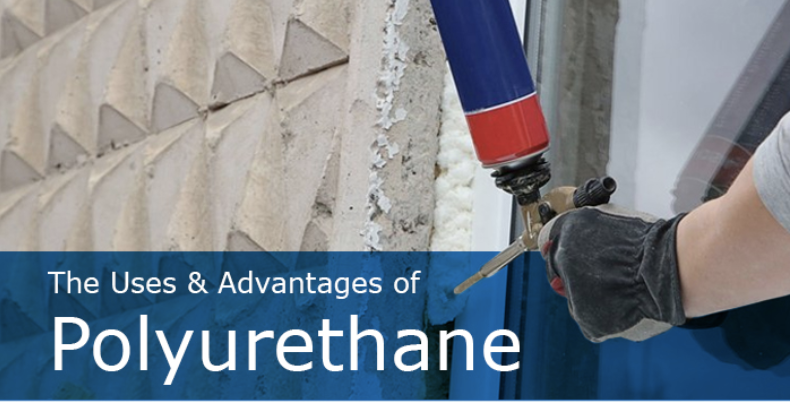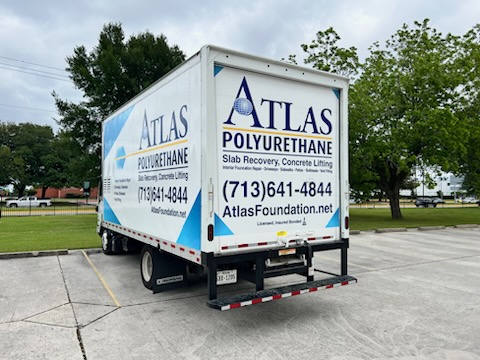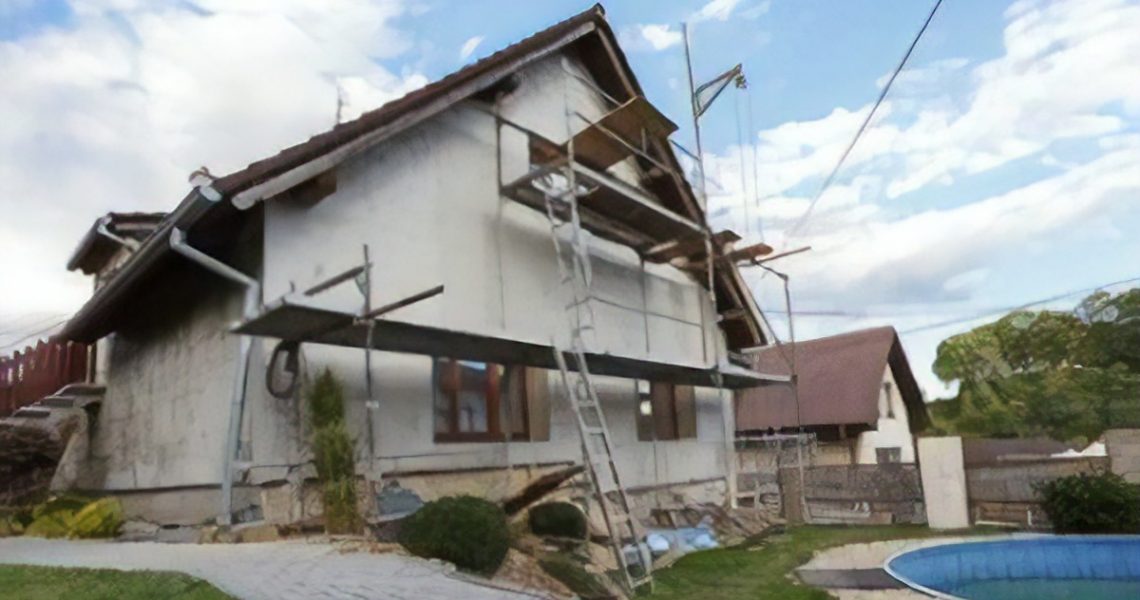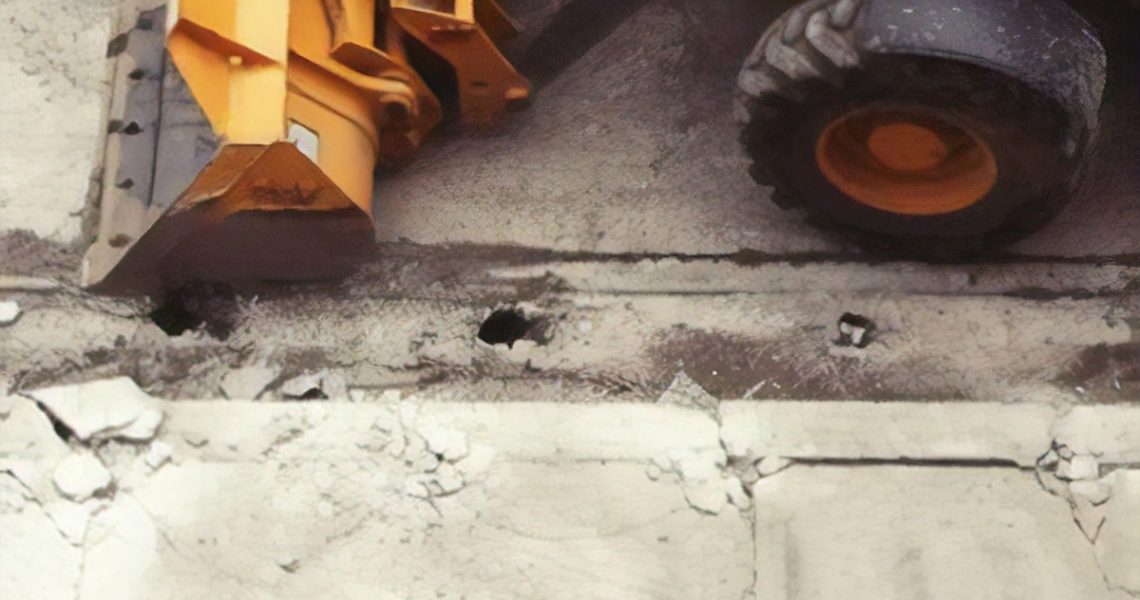Preparing Your Home for Extreme Weather
This past weekend, the East Coast was hit by a major snowstorm that impacted residents from New York to Topeka. Over 73 million Americans in total were affected by the snowstorm, forcing many residents to stay at home and wait it out.
People living in southwestern states like Texas, or out on the West Coast, likely won’t have to deal with snowstorms as severe as those that blanketed folks back east. Still, people living in subtropical regions should be completely prepared for extreme weather conditions. In fact, it may be all the more reason to be on guard. With that in mind, we will focus on some tips anyone can use, regardless of where they live, that will properly prepare their homes for any form of extreme weather.
Tip #1: Prep your home.
Preparing for extreme weather means preventing your home foundation from cracking or otherwise deteriorating. Home foundation cracks can result in uneven walls and floors, as well as the formation of frost and ice underneath the home during the wintertime. The first step in extreme weather preparation is creating a plan of action that can help you determine your home’s vulnerable areas (e.g., cracks in windows) and the means to protect them (e.g., weatherproofing). From there, execute the necessary steps to put your plan into action. If you’ll be out of town and away from your home for a significant period of time, you should decrease the thermostat, unplug appliances and turn off the hot water heaters.
Tip #2: Protect your pipes.
As the temperature gets colder, outdoor faucets and hoses become particularly vulnerable to bursting from the inside. This can be prevented by first running those faucets of any excess water, followed by shutting off the faucets at the source (which will most likely the inside valves). If you’re worried that your indoor pipes may freeze, drain the waterlines and open the faucets inside your home. It’s also recommended that you insulate your pipes in order to protect them from extreme weather—wrapping them in a towel will do just fine.
Tip #3: Remove wet and heavy debris.
Be sure to clear the outside gutters, drains and vents around your home to ensure that heating systems remain operational. Also, be sure to clear excess debris from the top of your roof so that its weight doesn’t cause a collapse. Finally, we recommend using rock salt (although sand will also do in a pinch) to remove any possible snow and ice from around your home.
Tip #4: Assemble an emergency kit.
Like any good Boy or Girl Scout, you want to be prepared for the worst-case scenario in which extreme weather knocks out the power in your area. Stock up on groceries and other necessary supplies beforehand in the event that the weather outside leaves you homebound. In addition, you should have an prepared emergency kit with the following items in it: at least one flashlight with working batteries (including an extra set just in case); a handheld radio to check for changes in weather conditions; and bottled water and other rations that won’t go bad if they’re not refrigerated. For more information about what should be included in your emergency kit, consult this list of items from the American Red Cross.
Tip #5: Take care of your vehicle.
Although it isn’t directly related to foundation repair care, your car is arguably the second-biggest investment you have after your home. For this reason alone, it’s important to make sure it’s in good working order should you need to brave the outdoor elements. Some keys to ensuring your car is in tip-top shape: a working car battery, solid coolant levels, and good tire pressure/tire tread.
Tip #6: Wait it out.
Bad weather can frustrate even the most patient of people. Once the rain or snow has ceased, the temptation is to get back outdoors and go about your regular activities. But before you decide to go out, ask yourself the following question: is the activity I wish to perform completely necessary at this time? If it’s not, stay safe and stay home. If warding off cabin fever is your biggest concern, divert yourself by reading a game or watching a movie.
For anything else we didn’t cover here, check out this CDC checklist for extreme weather preparedness. Stay safe, everybody!
Resiliently Adapting to Extreme Weather with Newly Designed Homes
Whether it’s the winter snowstorm that hit the East Coast last month or the tornadoes that swept throughout the South, extreme weather can impact regions unexpectedly and cause damage to homes not prepared for such conditions.
For this reason, many home foundation repair companies are employing resilient design strategies that make structures more resistant to climate change. A recent report from The Washington Post indicates that the resilient design trend is growing, as does a study from Munich Reinsurance America that shows 63 percent of Americans have fortified or plan to fortify their homes in preparation for extreme weather conditions that may occur.
As defined by one of the industry’s leading practitioners, the Resilient Design Institute (RDI), resilient design is “the intentional design of buildings, landscapes, communities and regions in order to respond to natural and man-made disasters and disturbances as well as long-term changes resulting from climate change.” The resilient design homes offered by companies like RDI are custom built to withstand the extreme weather conditions that are most likely to occur in a given area. For instance, a home built in the North might feature insulated panels to protect homeowners from extreme cold, while a home in the South might include solar electric systems that take advantage of the subtropical climate of an area such as Houston.
The homes constructed by conventional home building companies may be well suited to the weather conditions that a region may typically experience. However, they are less prepared to deal with extreme weather caused by climate change. Therefore, companies like RDI are primarily interested in building durable domiciles that proactively prevent extreme weather from damaging it. The homes such companies build are designed to adapt to weather extremes by forecasting the patterns that may exist in the future.
So what factors should one consider in building a resilient design home? According to experts interviewed by the Post, here are a few keys to consider:
- Build your home aboveground in order to avoid water intrusion, which can then lead to foundation damage and degradation.
- Invest in a high-quality housewrap so that extreme weather, specifically hard rain and wind, doesn’t penetrate cracks in your home siding.
- Purchase drywall panels that are resistant to mold, mildew and other things that may damage your home.
- Consider designing your home (if it’s a new build) in a manner that takes advantage of natural light, enabling it to be used as a power source should the electricity go out.
- Employ a sturdy, wood-frame construction for your home that allows for a higher degree of insulation and prevents water from getting in.
More and more homeowners are looking toward strategies that will make their homes more resilient regardless of what weather may come. In short, building homes that can withstand extreme weather conditions of all types will be a considerable challenge facing home repair companies in the future. Some trailblazing companies are on the leading edge of a new form of home design, thereby giving the rest of the industry a path to follow towards a sustainable and eco-friendly future.
Not All Home Foundations Are Equal
When a home owners is ready to purchase a house, there are many things which must be checked by an inspector before they can close the deal. From plumbing and inner walls to basements and the foundation of the house itself, everything must be checked before a payment is made to ensure that the home is safe to live in. Unfortunately, the foundation of the home is one thing which can crack over time and may be missed during the initial inspections. Not all foundations are created equal, and if not made properly can cause many problems later on over the years.
Not all foundation companies are the same, and depending on who created the original foundation can make a big difference down the road. If done properly, a foundation under a home should last forever, taking earth movement into consideration. When a foundation is not created properly, or if it is rushed, it can cause cracks in the foundation which will later cause cracks in your home. If the bottom of the foundation was not compressed properly, or there were rocks under the foundation which were not properly patted down, it can cause cranks which let in moisture and ruin your flooring. Cracking foundation can also create uneven flooring, uneven doors and cracks in your walls and ceilings. If you notice that your doors are no longer closing properly or cracks are forming in your walls or ceilings these are signs that your foundation needs repair.
If you wait too long to fix your foundations, it can cause more problems in your home and lead to more costs later on. It is always best to call out a foundation repair company that can check and analyze your foundation to see if it needs repairs or not. By having a professional come to your home to give you a quote, they can let you know the benefits of repairing your foundations and how much money it can save you later from other problems that may arise.
Learning About the Pier and Beam Foundation in Your Houston Home
Even if you’re the most fastidious of homeowners, you may not know about the particular needs of the pier and beam foundation for your home. Unfortunately, many don’t find out about—let alone think about—their foundation needs until a foundation repair expert needs to be called. At Atlas Foundation Repair, we believe in educating homeowners so that minor issues don’t develop into larger, more expensive problems. With that in mind, this blog post is designed to inform you about the pros and cons pier and beam foundations, as well as compare them to other options such as concrete slab foundations.
A pier and beam foundation involves the use of a concrete pier that is reinforced with steel beam. For a typical Houston home, a pier and beam foundation (also known as a post and beam foundation) is a type of elevated substructure that typically includes a crawlspace that supports the foundation. This crawlspace may include electrical and plumbing units used to support the home. Thanks to this accessibility, repairmen can reach these units more easily to make the necessary fixes.
Another advantage to a pier and beam foundation is that it provides a degree of stability for a home in Texas built on shifting soil. But foundations of this type—or more specifically, the wood beams they rest on—will inevitably deteriorate if not maintained. Mold, mildew, and roach or rodent infestations are just a few of the potential pitfalls to a pier and beam foundation. Over time, the wood beams can cause the home’s foundation to sink, shift or settle, which can lead to significant home repair issues.
foundations have the advantage of increased durability and are particularly suited to clay soils. They can also be built quickly and inexpensively. However, foundations made from concrete are nearly as prone to shifting soil conditions as its pier and beam foundation equivalent. When the soil becomes overly damp, it expands outwards and upwards underneath the
home. Also, such slab foundations don’t leave room for a basement space (which, admittedly, is not much of an issue for Houston homeowners, since our city is at sea level).
For our money, a pier and beam foundation is superior to concrete slab foundations in that the former are both easier to repair and easier to make repairs to if your plumbing and electrical units “live” under the foundation crawlspace. Moreover, the steel beam construction ensures that the foundation is less liable to shift under the home than would a concrete slab
foundation. While a pier and beam foundation can be pricier, a qualified foundation repair company like Atlas Foundation Repair can do wonders in terms of delivering work that will have you and your house standing tall for many years to come.
Now that you’ve been armed with information about pier and beam foundations, we hope you’ll be able to recognize when your foundation may require your immediate attention. Should you experience sagging floors, shifting beams or any other symptom of home foundation disrepair, don’t hesitate to call Atlas Foundation Repair in Houston. For more information, contact us today at 713-641- 4844 or visit our site to schedule a free evaluation!
The Most Important Part Of A Home Is The Foundation
There are quite a few neighborhoods in and around the Houston area that have started to grow. From areas within the 610 loop such as first and third ward as well as Memorial, Sugar Land and Richmond, there is much land around the Houston area which is being used for residential property.
Many of these homes will be custom built while others will be built to match the existing homes. However they are designed, it is important for homeowners to follow every step of the building process starting with the foundation of the house itself. No matter how big or small the house may be, the most important thing for a home is the foundation on which it is built. If the house it not built on a strong and steady foundation then years down the road when the foundation cracks, it damage the internal and external walls of the house.
There are many homes around that nation that have been standing for decades without any foundation issues while there are those in Texas that have not even been around for a whole decade and are already in need of foundation repair. Since Texas lawmakers are lenient when it comes to business owners and home builders, they have not stressed enough how important it is to have a quality foundation so that it does not cause you and other homeowners problems after purchase.
Due to this, when new houses are being build around the Houston area, you are urged to pick out a qualified and reputable foundation and home builder so they do not cut any corners. Saving some money now with a cheaper company may result in spending thousands later to save a faulty foundation would could have been prevented. When you are purchasing a new home, or having one built, a good idea would be to speak with others in the neighborhood. See if they have had any foundation problems and if so which companies they used to have their homes built. By getting information from your next door neighbor you can pick out which companies will work and which ones won’t for your new home.
By doing some research ahead of time, not only can you save money but you can also save much hassle down the road. The last thing you want is to be living in your dream home and one day to wake up and find cracks in your ceilings and walls which will need to be repaired along with your foundation. For those that have been unfortunate enough to suffer from foundation issues, we offer foundation repair in Houston and all of the surrounding areas.











